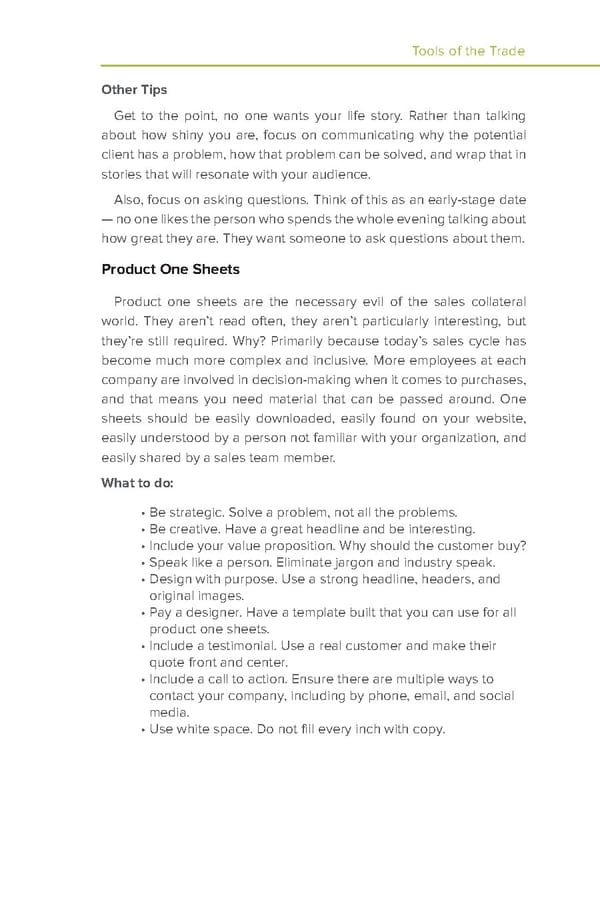Chapter 11 Tools of the Trade Other Tips Get to the point, no one wants your life story. Rather than talking about how shiny you are, focus on communicating why the potential client has a problem, how that problem can be solved, and wrap that in stories that will resonate with your audience. Also, focus on asking questions. Think of this as an early-stage date — no one likes the person who spends the whole evening talking about how great they are. They want someone to ask questions about them. Product One Sheets Product one sheets are the necessary evil of the sales collateral world. They aren’t read often, they aren’t particularly interesting, but they’re still required. Why? Primarily because today’s sales cycle has become much more complex and inclusive. More employees at each company are involved in decision-making when it comes to purchases, and that means you need material that can be passed around. One sheets should be easily downloaded, easily found on your website, easily understood by a person not familiar with your organization, and easily shared by a sales team member. What to do: • Be strategic. Solve a problem, not all the problems. • Be creative. Have a great headline and be interesting. • Include your value proposition. Why should the customer buy? • Speak like a person. Eliminate jargon and industry speak. • Design with purpose. Use a strong headline, headers, and original images. • Pay a designer. Have a template built that you can use for all product one sheets. • Include a testimonial. Use a real customer and make their quote front and center. • Include a call to action. Ensure there are multiple ways to contact your company, including by phone, email, and social media. • Use white space. Do not fill every inch with copy.
 Tools of the Trade Page 4 Page 6
Tools of the Trade Page 4 Page 6